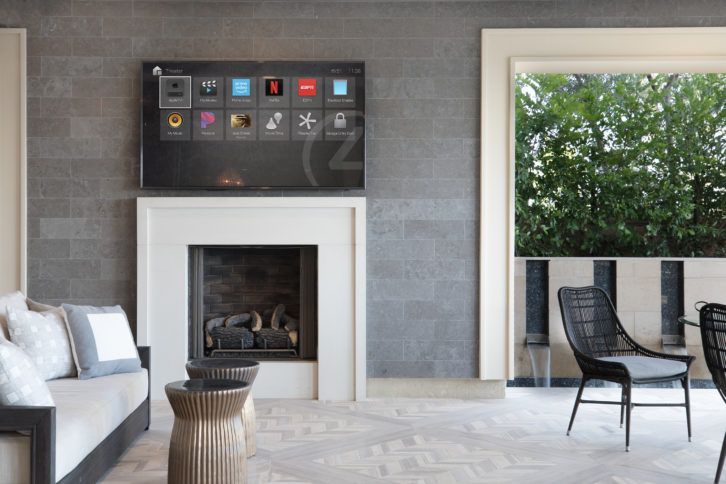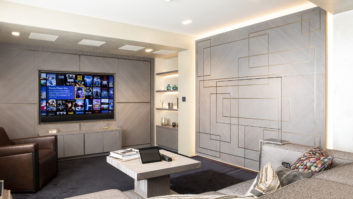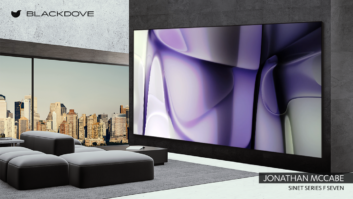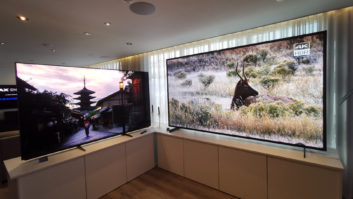You have Philips Hue lighting installed in various rooms. You have TP-Link smart plugs dotted around the house. You use Alexa to control it all, and to do various mundane tasks like telling you the time, or the weather forecast – or to turn on your electric blanket. You have a Ring doorbell, so that you can tell people you’re not at home all the way from your beach in Crete. You leave the office, and use your mobile phone to tell your Nest thermostat to turn on the heating ready for your arrival.
It’s all clever stuff, and you could reasonably claim that your home is now a whole lot smarter than it was a few years ago. But: is your home really smart? What will a truly smart home look like? And: what will it take to get there?
Single step
The eminently quotable ancient Chinese philosopher Lao Tzu famously noted that “a journey of a thousand miles begins with a single step” – and, perhaps surprisingly, the smart home industry isn’t as dismissive of those off-the-shelf smart home devices as might be expected. That’s largely because they represent that single step: they’ve both opened potential customers’ eyes to the possibilities, while leaving them frustrated about how to move forward.
“They’re increasing demand — homeowners are realising that these devices are not the panacea they were hoping for,” says James Ratcliffe, managing director, Homeplay, whose company is a CEDIA Member of Excellence. “They don’t want a bunch of disparate products that need constant attention; they want a curated, simple system that someone else looks after for them. Gadget fatigue is becoming a thing: consumers want the benefit that tech can bring to their lives, but they also want simplicity.”
“These types of DIY-installed products have built the path for the professional smart home system,” echoes Charlie Kindel, chief product and technology officer at SnapAV, who merged with Control4 last year. “As consumers adopt more and more connected devices to their systems, they are realising that installing, updating, and managing them is not simplifying their lives, but instead complicating them.”

Positive
Steve Detmer, residential product manager at Lutron, is similarly positive about what he sees.
“Off-the-shelf solutions are a good way for homeowners to dip their toes into the smart home ocean,” he believes. “They’re inexpensive, fun and easy to set up. They also offer installers a world of opportunities. These smart devices drive consumer awareness of smart home solutions and can work as a great entry point to introduce professional systems such as lighting, security, audio, and HVAC.”
“The beautiful thing about these devices is that they offer an entry point into the market,” adds Phillip Pini, head of residential sales UK for Technological Innovations Group (TIG), who has been working with Crestron product for over 25 years. “At TIG, we often see that clients start small before expanding – for example, distributed audio can later be added to a wireless lighting system.”
That positive outlook is reflected in research that CEDIA recently conducted for the UK home technology market, which found confidence high among participants. 80% expected to continue to grow their revenue over the next 12 months. The volume of projects is also showing steady growth.
Sean Miller is electrician channel programme manager at building automation company Schneider Electric. “The smart home industry is growing at an exponential rate, with the market expected to grow by 22% year-on-year,” he notes. “This year, household penetration stands at 25% and is expected to rise to 45% by 2024. Other than long-term trends – namely lower product costs and the increasing demand for convenience – energy efficiency is a significant driver of change. With the UK required to meet its ambitious net-zero commitments over the next few decades, the government and consumers are under pressure to reduce energy bills and become more efficient.”
- Showcase: Lighting control
- Technology takes you home smart home: ISE Daily
- StingRay is ready for outdoor action
Proliferation
Against that backdrop, and with the proliferation of devices and solutions from the likes of Apple, Amazon and Google at least somewhat responsible for driving the market, there are other drivers in play too.
“The smart home market is growing, and there are two key factors driving this: wireless technology and lower costs,” says Detmer. “Wireless residential technologies make it possible for existing homes to become smart homes, without the costly and messy remodel that would be required with cabling. And: hardware is becoming more affordable, as the price of components, processing power and memory decrease.”
“TIG is certainly seeing growth in this market, particularly where there is a desire for more unified, simpler integrated systems,” enthuses Pini. “It’s an exciting time for Crestron, with the launch of Crestron Home last year. The Crestron Home operating system allows for flexibility as product and technology continue to evolve. We’re seeing strong demand for this from clients and dealers.”
For smart homes to take off, however, will necessitate not just the upgrade of existing properties: it will also be vital that the technology is embraced by new builds.
“Smart home is also a selling point for new homes,” points out Mitchell Klein, executive director at the Z-Wave Alliance. “Developers and real estate groups are recognising the draw that smart home brings as it gains popularity, and they’re opting to add smart systems to new home builds or calling it out as a perk in realty listings.”
Klein also notes the attraction of smart home technology to developers of, for example, MDUs (multi-dwelling units) – not only increasing their attractiveness to potential purchasers, but also to property managers with the remote management capability that smart home systems bring.
Wireless
So: what’s hot – and what’s not as hot as it once was? Earlier, Detmer noted the transformative effect wireless technology is having on growth in the market – and returns to the theme.
“Previously, hundreds of metres of cabling were used to connect all smart home devices, which would be controlled by specialised touch panels,” he explains. “This technology existed only in large, luxury, new-build homes. Today, most smart home devices are available in wireless formats, and wall-mounted control interfaces are replaced by tablets, smartphones and smart speakers. Wireless may not sound brand new, but it is still the ‘hot’ technology driving the market.”
Few would disagree that wireless is the future – but for Oz Yildirim, executive vice president and general manager of the Americas Business Unit at managed mesh WiFi company AirTies, there’s still much that can be done that will facilitate a seamless smart home experience.
“One of the most significant shifts in the smart home is the role that internet service providers are taking to ensure optimal performance of smart home devices,” he believes. “In addition to providing broadband services, many are now offering bundled home security packages and new whole-home, or “Smart”, WiFi services. Generally, these new smart WiFi services can include upgraded software on the home modem/gateway; mesh extenders to reach every corner of the home; and management software that lets call centres and consumers manage all the devices running on the home network. This evolution means that service providers recognise that it is no longer good enough to bring internet into the home. They must support a high-quality experience throughout the home itself, on both devices they control and devices that consumers purchase for themselves.”
Part two of this feature is coming soon to the Installation website… stay tuned!







